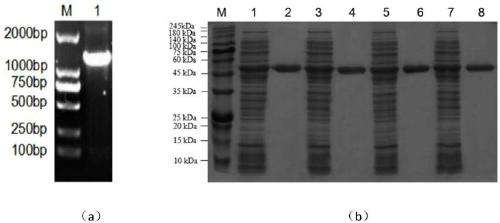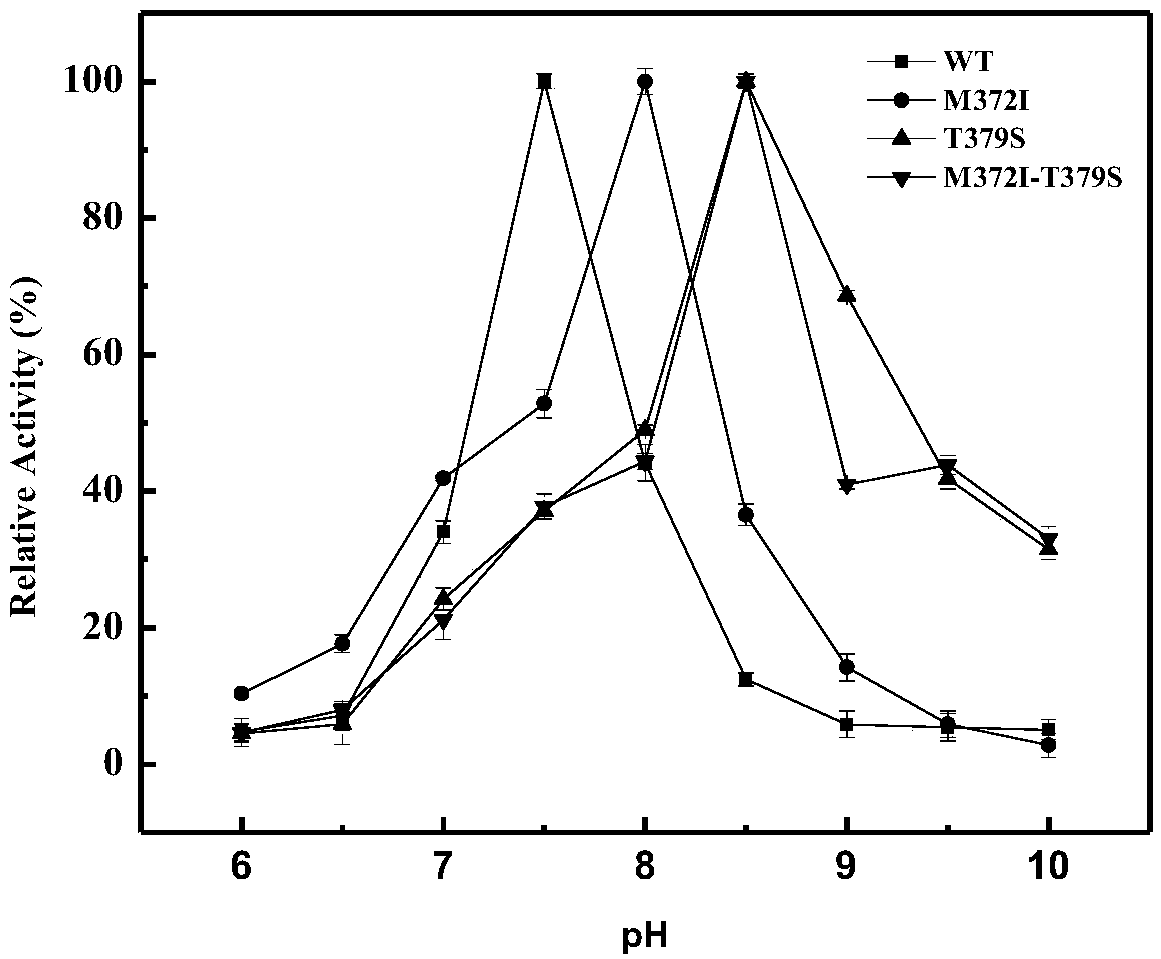High enzyme activity aspartokinase mutant, engineering bacterial strain and preparation method of mutant
A technology of aspartokinase and mutants, applied in the field of bioengineering, can solve problems such as heavy tasks, difficulty in further increasing target product yield, and long cycle time
- Summary
- Abstract
- Description
- Claims
- Application Information
AI Technical Summary
Problems solved by technology
Method used
Image
Examples
Embodiment 1
[0035] Example 1. Construction of recombinant E. coli strain
[0037] The chromosomal DNA of Corynebacterium pekinense was extracted by TAKaRa genome extraction kit, and PCR amplification was carried out using it as a template under the action of cloning primers. A large number of AK target gene fragments were cloned. The PCR nucleic acid electrophoresis verified that Corynebacterium pekinense Acid kinase (AK) is attached figure 1 There is a bright band between 1000 and 2000 bp, which corresponds to the length and size of SEQ ID NO:1. The reagents were purchased from TAKaRa Company, and the designed cloning primers are as follows:
[0038] Upstream primer: 5'-GGAATTC CATATG GCCCTGGTCGTACAGAA-3'
[0039] Downstream primer: 5'-G GAATTC TTAGCGTCCGGTGCCTGCAT-3'
[0040] The underlined part is the restriction enzyme cut site of NdeI and EcoRI.
[0041]
[0042] (2) Construction of recombinant E. coli strain
[0043] The PCR product containing the AK target ...
Embodiment 2
[0059] Example 2. Construction of aspartate kinase mutants
[0060] (1) Construction of a mutant of aspartic kinase M372
[0061] Using the pET-AK recombinant plasmid in Example 1(2) as a template, the primer 5’-GTAACACCTGGGTGAGACTG upstream of M372N NNN GCCCGCACC-3’, downstream primer 5’-CTCGT GGGTGCGGGC NNN Carry out mutation PCR reaction under the action of CAGTCTCACCC-3' (the underlined part is the mutation site), and use restriction enzymes EcoRI and NdeI to double digest the PCR product and pET-28a vector and connect overnight (Using Example 1(2) Double restriction digestion and ligation system), the ligated product was transferred to E. coli BL21 (DE3) competent by the method 1(2) to obtain the aspartokinase M372 site mutant Strains.
[0062]
[0063]
[0064] (2) Construction of a mutant of aspartic kinase T379
[0065] Using the pET-AK recombinant plasmid in Example 1 (2) as a template, using the PCR reaction system and amplification program in Example 2 (1), the primer 5'-C...
Embodiment 3
[0074] Example 3. Enzyme kinetic analysis and characterization of enzyme properties
[0075] (1) Separation and purification of crude enzyme solution
[0076] The recombinant E. coli strain (WT) of Example 1 (2) and the high enzyme activity mutant (single mutant M372I and T379S) and double mutant M372I-T379S of Example 2 were inoculated at 2% (v / v) The amount was transferred to 100mL LB liquid medium containing kanamycin, after overnight culture at 37℃, 180r / min, IPTG inducer (final concentration 1mmol / L) was added, 30℃, 130r / min, induced 12h . Centrifuge the bacterial solution at 8000r / min for 10min, discard the supernatant, add 10mL PBS to resuspend the bacteria, sonicate for 30min, and centrifuge at 8000r / min for 10min. The supernatants obtained are WT crude enzyme solution, M372I crude enzyme solution, and T379S crude enzyme. Solution and M372I-T379S crude enzyme solution. The crude enzyme solution was separated and purified by affinity chromatography on a nickel column. The...
PUM
| Property | Measurement | Unit |
|---|---|---|
| diameter | aaaaa | aaaaa |
Abstract
Description
Claims
Application Information
 Login to View More
Login to View More - R&D
- Intellectual Property
- Life Sciences
- Materials
- Tech Scout
- Unparalleled Data Quality
- Higher Quality Content
- 60% Fewer Hallucinations
Browse by: Latest US Patents, China's latest patents, Technical Efficacy Thesaurus, Application Domain, Technology Topic, Popular Technical Reports.
© 2025 PatSnap. All rights reserved.Legal|Privacy policy|Modern Slavery Act Transparency Statement|Sitemap|About US| Contact US: help@patsnap.com



